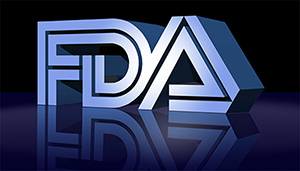Here’s how medical device makers can capitalize on the strategic priorities and transparency initiatives at FDA’s CDRH.
Lisa Olson, RCRI
 Scott Gottlieb has now settled into his role as FDA’s new commissioner and is putting his stamp on the agency.
Scott Gottlieb has now settled into his role as FDA’s new commissioner and is putting his stamp on the agency.
Interestingly, he has started with some very specific points of focus that have bubbled to the surface in the political arena, including the drug approval process and tobacco and opioid addiction.
On the working level, Gottlieb’s appointment has not interrupted the momentum of the agency as a whole. When the totality of FDA actions and external communications are evaluated, the agency is still demonstrating a focus on the strategic priorities set out in 2016. Although the recently signed fourth iteration of the Medical Device User Fee Act (MDUFA IV) has several new points, all of the changes serve to support the 2016 initiatives.
(Network with RCRI experts at DeviceTalks West, Dec. 11–12 in Orange County, Calif.)
Strategic priorities
The initial priorities set forth in 2016 focused on three main topics: establishing a national evaluation system, partnering with patients and promoting a culture of quality and organizational excellence. For 2017, the agency went deeper by defining how they intended to support those initiatives with the Regulatory Science Priorities document. These priorities ranged from the use of big data in decision making to the development of new evaluation tools. There are tactical points for safety evaluations and controlling the microbial risks in reprocessed and sterile devices. Notably, these are all externally facing initiatives. However, FDA is honoring its commitment to improvement, transparency and accountability through their highly detailed quarterly reports.
MDUFA IV commitments
Important commitments that will fundamentally impact how the FDA works have been included in MDUFA IV. Laying out the pilot program for laboratory accreditation, as well as actually accrediting laboratories, may not be revolutionary but will dramatically impact how review of submissions are done as well as how submissions are constructed. Furthermore, MDUFA IV formally commits FDA to accepting third party review. Although FDA has been regularly reporting to Congress, the new requirement is far more explicit in linking performance and activities to monies appropriated.
Capitalizing on the information
Basically, Regulatory Science Priorities and MDUFA IV are about measurable performance and accountability. With an understanding that the FDA is being driven off of metrics, one can extrapolate that interactions with FDA may begin to be more highly formulaic. Standardized evaluations, reliance on checklists and uniform responses from the agency are going to become common. This can present both a benefit and a challenge for the device industry. On the positive side, interactions with the agency should become far more predictable. Evaluating warning letters, blogs, Twitter feeds, inspection reports and quarterly reports to Congress will tell manufacturers a lot about FDA expectations. On the negative side, reviewers are going to be more stringent about meeting guidances exactly, without deviation.
On the surface, this standardization should help expand FDA capacity and provide a more uniform approach to FDA review and feedback. Looking deeper, this could also drive the agency to be potentially less flexible in accepting alternative or novel approaches. Expect that submissions are going to be closely held to the published requirements. Policies such as RTA, allowable interactions, number of review cycles, etc. will be closely followed. Pre-submission meetings will have more importance than ever to ensure that planned approaches will meet agency expectations.
Despite the drive towards metrics, there is a clear initiative to be accessible. Both the pre-submission meeting program and the interactive review process should be used to your advantage. However, every interaction with FDA should be very carefully planned. When engaging in a pre-submission meeting, have your strategy as well developed as possible. Have a list of questions that are specific, detailed and designed to gather agency expectations. Submissions must not only be thorough, correct and detailed but also well-constructed to lead a reviewer right through their review process to a clear and compelling case for device safety and efficacy. Any novel approaches in your submission should be well justified and clearly defended.
We are in a time of complex and continual change. However, FDA is providing multiple indicators of their expectations. Use all of these indicators to smooth your regulatory pathway.
Lisa Olson is president of RCRI, a Twin Cities–based medical device strategic consulting company. Olson has over 20 years of experience in the medical device industry providing contract research services to startup through Fortune 100 companies. She has extensive technical experience in pre-clinical research, including in vitro and in vitro biocompatibility, genotoxicology and toxicology models.





Rebuttal to statement “On the negative side, reviewers are going to be more stringent about meeting guidances exactly, without deviation.”
Ms. Olson,
I agree with your views regarding how FDA CDRH’s evolving policies are designed to address the Center’s Regulatory Science Priorities (RSP). Well written and informative analysis. FDA CDRH should be applauded for pursuing a more “real world” pragmatic approach toward meeting it statutory objectives. FDA CDRH’s most recent RSP policy statement (2017) indicates that
“We envision that, collaboratively with our external stakeholders, we can work to maximize the impact of regulatory science research investments which will lead to patients having faster access to more innovative, safer devices with reduced healthcare costs.”
And of course, the Center’s Office of Device Evaluation will continue to meet its statutory and regulatory obligations even as it applies the novel approaches to achieve the 10 point priorities outlined in the RSP, chief among these legal obligations being the application of ‘least burdensome approach toward product evaluation as cited in The 21st Century Cures Act (Dec 2016) as a ratification of FDAMA 1997.
So your warning that the Agency might become more rigid in its application of ‘nonbinding guidance for industry’ gives me pause. As we know, a ‘one size approach’ toward generating valid scientific evidence to demonstrate safety and effectiveness and a favorable benefit/risk profile does not fit all situations.
We need to remain aware that a policy of “Regulation by Guidance” is anathema to principles of law and equity.
For industry’s part, we should strive to compile solid, empirical evidence of safety and effectiveness to support performance claims. This evidence can be gleaned from several credible sources, including traditionally derived ‘verification and validation’ experimentation. Applying an epistemological approach toward the use of ‘real world evidence’ obtained from Big Data sources is endorsed by FDA in the RSP policies.
Fastidious adherence to FDA Guidance ‘checklists’ can represent a step backwards, and thereby defeat the goals embodied in the Regulatory Science Priority policy.
See Connor N. Raso, Strategic or Sincere? Analyzing Agency Use of Guidance Documents” Yale law journal 119:782 (2010) http://www.yalelawjournal.org/pdf/855_phetapk6.pdf; and see Abbe R. Gluck, Anne Joseph O’Connell, and Rosa Po. “Unorthodox Lawmaking, Unorthodox Rulemaking,” 115 Colum. L. Rev. 1789 (2015); http://columbialawreview.org/content/unorthodox-lawmaking-unorthodox-rulemaking/
Thanks for the comment, Robert. I’ll point out to Lisa, in case she’d like to respond.